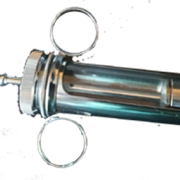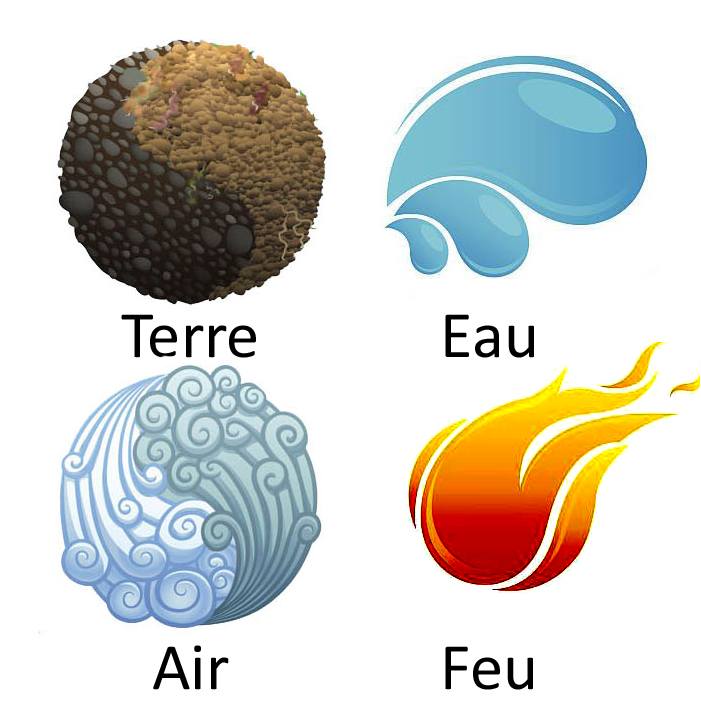Vaccination is a very delicate subject, especially following the Covid-19 pandemia, therefore, I must immediately clarify my point of view: I am not anti-vaccination and I am not against the vaccination of children (I will return to this question later).
We must not hide that vaccination has side-effects, some of them quite serious, which can be judged from two different points of view. From the health point of view, regarding the population altogether, in other words, from the statistic point of view, the ratio of adverse side-effects is quantitatively low compared to the ratio of vaccinated and protected people. Therefore, the advantages outweigh the disadvantages. The problem is that we are not statistics, but people. From this point of view, the risk is being the one to suffer, sometimes for a long time from the effects, and sometimes even succumb, as is the unfortunate case with AstraZeneca (we will talk about it later on).
Let’s take a closer look at all of this.
The purpose of vaccination is the stimulation of the immune system to produce antibodies targeted towards an infectious agent. In the most general case, it is the injection of an element, called an antigen, presented on the surface of a pathogen. Recently, a new methodology has emerged, which consists of injecting a genetic material, RNA, or DNA, extracted from the pathogen.
The immune response follows two stages. The first is a sort of pre-armed situation, ready for the attack. This is the immune response known as innate.
The second stage is then set up, with a delay of 15 days. This response is called adaptive because it adapts to the antigen.
It must be clearly seen that this simple phrase implies that the organism will develop an antibody, therefore a protein, which will be an exact reversed image of the antigen. This problem has long intrigued immunologists: how can the organism generate antibodies targeted against all possible and imaginable structures that do not even exist on earth and are only imagined by chemists. The answer came forty years ago: the organism manipulates its genes to adapt to the presented antigen.
Antibodies are products by certain white blood cells, B lymphocytes, which at first produce “draft” antibodies, that are more or less suited to the antigen. Then, through a very elaborate mechanism that we cannot go into detail there, the lymphocytes that will produce the best reaction are selected, they then multiply, gradually improving their response, until they reach the production of antibodies perfectly adapted to the antigen.
Naturally, it takes time, plenty of time. 15 days is far too long for an efficient response against infection.
Let’s do some calculations. Bacteria multiply in a very simple manner, by dividing into two. At what speed? We can estimate that a bacterium entering the body will divide every twelve hours or so. In these conditions, every bacterium can generate a BILLION others in 15 days. As for viruses, it would be much more.
The body must therefore react immediately under penalty of being overwhelmed before the formation of an effective defense. This is the role of the innate immune system, the first level of our rocket.
The innate immune response is also very sophisticated. It calls after other white blood cells, most notably the lymphocytes named NK “natural killers” and the DC “dendritic cells”, both of which are our sentinels (there are many types of each). These cells constitute the system alert: they do not detect a particular antigen but rather generic structures, i.e. molecular structures that are present in bacteria, viruses, or other micro-organisms but not in humans. They therefore report the presence of infectious agents.
It is for having detailed this mechanism of recognition and alert, that Jules Hoffman won the Nobel prize in 2011.
Detection of infectious agents is not sufficient; as we have seen, there must be an immediate and energetic fight. At this point the pathogens that have entered are not identified with exact precision, the organism will mobilize molecules and ancestral cellular mechanisms which are universal, inherited from the earliest days of evolution. Since they do not target a specific agent, they generate non-specific toxic factors. Among them are so-called reactive oxygen species, in other words, oxygen in an active chemical form. They are destructive for all pathogen types, but also for surrounding tissue. This is inflammation.
(Read this excellent article from Wikipedia: https://en.wikipedia.org/…/Syst%C3%A8me_immunitaire_inn…)
Just like a rocket, the two levels of the immune response form a whole. It is not possible to induce the production of antibodies without igniting the first level, without activating inflammation. Therefore, classic vaccines contain an adjuvant, a product intended to induce this reaction. In most cases, these products are aluminum salts. The administered quantity is certainly low, but always sufficient to induce inflammation.
Regardless of the technology, there remains a risk of adverse side effects. It may occur in susceptible individuals in the form of a disorders, moderate or severe, sometimes severe. How many individuals are affected? It is difficult to be exact, since these “accidents” are denied most of the time: Nothing enables us to conclude that the disorders and reported deaths are actually related to the vaccination. The argument is often advanced. It means to avoid the problem. Move along, there’s nothing to see here. Or: “the vaccine did not cause health problems; all it did was reveal an underlying pathology”. Fallacious argument, which calls for revision of the penal code: in such conditions as these a homicide would not be objectionable because it only reveals the mortal condition of the victim.
RNA/DNA VACCINES
The situation has now radically changed. Vaccination is now entering a new era through the use of genetic material of the pathogen, RNA or DNA. Once injected, the material is picked up by the dendritic cells where it is transcribed into messenger RNA (mRNA) to be translated into a protein, that is to say, an antigen. Thus, the antigen is not injected but is a produced inside the body. Therefore there is no need for an adjuvant, as the innate immune system is directly activated.
DNA is generally incorporated into an adenovirus, an attenuated virus. The Pfizer vaccine is different. It skips all the stages to only keep purified mRNA. This is a sort of vaccine that is reduced to its most simple expression, so as to avoid the numerous adverse side effects. There remains the risk of an anaphylactic reaction (allergy). This is a severe reaction but is manifested shortly after injection and can be quickly addressed and faced by a prepared health care team. There remains a practical drawback, it must be stored at -70° because RNA is extremely fragile, unlike DNA. The reason is because inside the cell, protein production is rigorously controlled. Once translated, mRNA is degraded by enzymes, the RNAses. Thus, once read, the message is erased, so that it cannot be used several times in a reckless manner. These enzymes are universal and ubiquitous, so much that all purified RNA must be protected and well-kept at very low temperatures (it can, however, sometimes be stored at -20° for a few hours).
The great advantage of this technology is that in case of virus mutations, which occurs inevitably and is verified in COVID-19, it is possible to isolate the RNA or DNA of the mutant to produce an appropriate vaccine.
Thus, this would help in avoiding what happens in the flu vaccine, which is produced from viral strains from the previous year, which is more or less obsolete when it arrives at the pharmacy. Some seek to produce a universal vaccine, which will be effective against all variants, but the objective is still far from being achieved. Whatever the case or vaccine in mind, the production of timely and useful vaccines remains among major operational problems.
VACCINATION OF CHILDREN
The child’s immune system is not yet mature, so they have little risk of developing uncontrolled inflammation. This is the reason why they do not present grave cases of covid-19 since, again, inflammation is the basis of this pathology (1). The immune system is highly inefficient for the first two months, that does not mean that the new-born is defenseless because in fact it is protected by maternal antibodies which pass through the placenta and are present in breast milk. Therefore, some intend to vaccinate the pregnant mother so that the child would be protected at birth.
Thus, in principle, there is no fear of vaccine accidents with children. Some parents worry about their children being subjected to multiple vaccines, several vaccines combined in a single injection. There is no need to worry because the adjuvant is the same, regardless of the number of combination vaccines. This is the current situation. Next, maybe children will receive RNA or DNA vaccines.
AND NOW?
Towards a universal vaccine.
RNA/DNA vaccines bring innovation to a field that has evolved very little during the last century and a half.
The virus constantly changes which causes the vaccines to lose effectiveness. The difficulty is the following. Every pathogen that passes to the host’s cells, whether it is a virus or something else, possesses on its surface protein structures which allow it to adhere to the target cell before entering inside it. In the case of Covid-19 these anchor points are the spikes that ruffle the surface of the virus. These structures are exposed, and so are the targets of the antibodies produced by the host. The pathogen mutates, modifying its structures in a way that leaves the antibodies partially or completely ineffective.
Many teams are scrambling to develop a universal vaccine, which would keep the same level of efficacy against all variants, known or yet to be known. The problem is hard and up till now seemed to be unsolvable. However, a first and most remarkable response has been made regarding the flu virus. In this case, the anchorage structure is a protein called hemagglutinin. An American team has created an assemblage of different hemagglutinins, in a computer-defined order, consisting of nanoparticles. The vaccine generated beams of neutralizing antibodies which the authors believe can be effective against all variants, which would help avoid renewing the vaccine every year, as is the case at the present (2).
TO GO EVEN FURTHER
Once again, the objective of vaccination is to induce the body to generate antibodies targeted against a pathogen. But the antibodies are only the tip of the iceberg. They are the culmination of a process initiated by the vaccine, which uses many cell lines. Therefore, the bulk of vaccine response, the induced protection by the vaccine, is not humoral (antibody) but cellular. Immunologists must take this aspect into account (3).
FINALLY, TO AVOID FANTASY
The injection of DNA or RNA has given birth to all kinds of fantasies: won’t this genetic material transform us into monsters or other abominable creatures? No, the risk is zero. Modifying the genetic material of a cell demands elaborate technology that can be implemented in a laboratory and cannot be applied to a limited number of appropriately prepared cells. This cannot occur with a vaccine injection.
- In Covid-19 is not the virus itself which causes tissue damage, but rather the provoked reactions of the body, including inflammation. Therefore, the disease can, and should be, treated with an anti-inflammatory, combined with an antibiotic, because a virus is always accompanied by opportunistic bacteria. See: http://science-sapience.fr/covid-19/
- Boyoglu-Barnum et al., Nature 2021, 592(7855):623-8.
- Dona Faber ; Tissues, not blood, are where immune cells function, Nature 2021, 593(7860):506-9.



Leave a Reply
Want to join the discussion?Feel free to contribute!